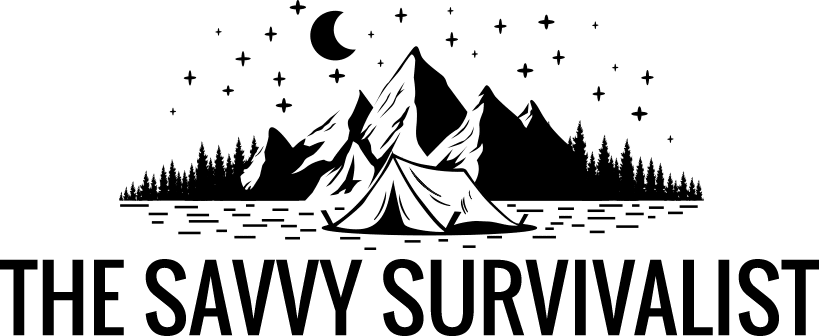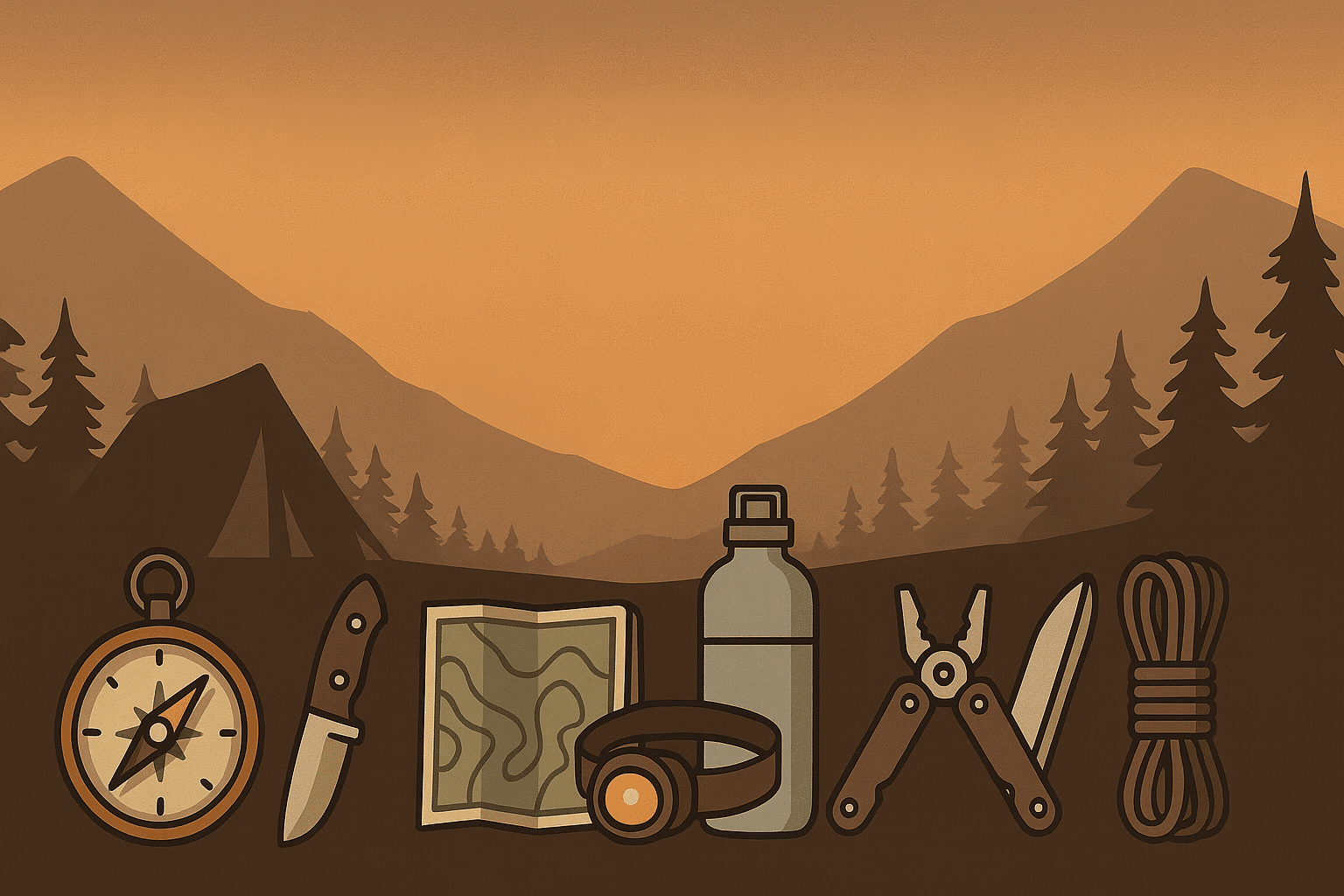“Ultimate Survivalist’s Guide 2025 | Savvy Survivalist”
Survivalist guide 2025: this is your field-ready playbook. Whether you’re new or you’ve logged a few nights under canvas, we go deep on core skills, the “why” behind every gear choice, and realistic drills so you can practice safely and confidently. We’ll dig deeper into each core skill, unpack the “why” behind every gear choice, and walk through real-world scenarios so you can practice safely and effectively. Let’s dive in.
This post contains affiliate links. I may earn a small commission at no extra cost to you. Learn more.
What Is a Survivalist—Really?
A survivalist isn’t an apocalyptic prepper clutching canned beans in a bunker. At heart, it’s anyone who embraces self-reliance: anticipating challenges, equipping themselves wisely, and cultivating the mindset that “I can handle this.” Whether you’re navigating unexpected storms on a weekend hike, weathering a power outage at home, or tackling backyard foraging, these principles apply.
Beyond Gear: The Survivalist Mindset
- Situational Awareness: Notice changes in weather patterns, animal behavior, or even how your own gear is wearing. The more attuned you are, the faster you can adapt.
- Problem-Solving Under Pressure: When a fire won’t light or your map rips, staying calm and troubleshooting methodically is more valuable than any tool.
- Continuous Learning: The wilderness is an ever-changing classroom—study new techniques, swap stories with fellow enthusiasts, and treat each outing as a drill.
Core Survival Skills
Shelter Building Basics
Your body loses heat rapidly to the ground and surrounding air. A well-constructed shelter retains warmth, wards off rain, and gives you psychological comfort.
- Site Selection Deep-Dive:
- Micro-climate Factors: Look for wind breaks (boulder caves, dense thickets) and sun exposure (south-facing clearings in cold weather).
- Hazard Audit: Scan for insect nests (yellow jackets), water runoff paths (avoid gullies), and potential wildlife trails.
- Shelter Types & When to Use Them:
- Lean-To: Fastest to build; ideal in light rain if you have a tarp or poncho.
- Debris Hut: Best insulation in cold; takes longer but uses only natural materials.
- A-Frame with Boughs: Offers rain protection and ventilation—great for multi-day stays.
- Insulation Layering:
- Ground Insulation: Layer 6–8 inches of dry leaves, pine needles, or grass under you to break conductive heat loss.
- Wall Insulation: Pile debris against a lean-to frame to block wind and trap pockets of warm air.
Fire-Starting Methods
Fire is more than warmth—it’s a signal, a cooking tool, and a morale booster.
- Building a Fire Lay:
- Teepee: Great for quick ignition; arrange kindling in a cone around your tinder.
- Log Cabin: Better airflow and long-burning; stack small sticks in square layers around your tinder bundle.
- Tinder & Kindling Pre-Prep:
- Natural Tinder—dry bark strips (birch bark ignites easily, even damp), fine grasses, or punky wood.
- Commercial Tinder—wax-coated cotton balls or emergency tinder sticks kept in a ziplock.
- Ignition Sequence: Gather multiple tinder types → light tinder → feed in progressively thicker kindling → add split wood once stable.
- Advanced Techniques:
- Friction Fires: Bow & hand drill sets require practice in dry conditions but work without modern tools.
- Solar Ignition: Use a Fresnel lens or polished mirror to focus sunlight onto your tinder.
Water Sourcing & Purification
No matter how well-equipped you are, a day without water can spiral into dehydration—and poor judgment.
- Hunting for Water:
- Vegetation Indicators: Lush greenery often signals groundwater near the surface.
- Animal Signposts: Trails converging downhill may lead to pools or springs.
- Rainwater Harvesting: Set up a tarp between trees with a central funnel point.
- Purification Options & Pros/Cons:
| Method | Pros | Cons |
|---|---|---|
| Boiling | Kills all pathogens reliably | Requires fuel and time (3–5 min boil) |
| Chemical Tablets | Lightweight, compact | Taste; limited shelf life |
| Straw Filters | Instant drinking, no prep | Bulky; doesn’t remove viruses |
| Pump Filters | High flow rate, long lifespan | Heavier; potential freezing issues |
| UV Purifiers | No taste, fast | Requires batteries; sensitive to turbidity |
Emergency Backup: Always carry at least two methods (e.g., filter straw + tablets). If one fails, the other keeps you safe.
Skill Drill: At home, collect murky pond water, filter it through your straw filter, then treat with tablets. Log the time and taste changes.
Food Procurement & Foraging
When pack snacks run out, wild edibles and simple traps can bridge the gap.
- Basic Wild Edibles:
- Dandelion: Leaves (salad), flowers (fritters), roots (roasted “coffee”).
- Cattails: Young shoots taste like cucumber; pollen thickens soups.
- Blackberries & Raspberries: Identify by their aggregate fruit—always smell-test a small piece first.
- Minimalist Fishing Kit: Spool of 20 lb line, size 8–12 hooks, split-shot sinkers. Rig a simple drop-line with local bait.
- Trapping Small Game: Figure-4 deadfall and snares set on animal trails can catch rodents if local regs allow.
- Energy Management: Aim for 2,500+ cal/day on strenuous outings. Prioritize nuts, energy bars, and dehydrated meals.
Safety Reminder: Always forage with a reliable guide. If you’re unsure, leave it out—mistaking mushrooms or plants can be dangerous.
First-Aid Essentials
Accidents happen. Knowing basic trauma care can turn a small injury into a story instead of a disaster.
- Wound Management: Clean (antiseptic or boiled water), dress (sterile gauze + tape), monitor for infection.
- Splints & Slings: Use sticks or tent stakes with cloth to immobilize fractures; T-shirts work as quick slings.
- Environmental Hazards:
- Hypothermia: Shivering, slurred speech, slowed breathing. Insulate & offer warm fluids immediately.
- Heat Exhaustion/Stroke: Headache, dizziness, nausea. Move to shade, cool skin, hydrate with electrolytes.
- Medications & Extras: Pain relievers, antihistamine, tweezers, CPR mask, gloves, tourniquet.
Training Tip: Take a wilderness first-aid course—even a weekend workshop teaches invaluable hands-on skills.
Essential Gear Checklist
Below is a master shopping list. When you’re ready, grab the fully designed PDF with icons, checkboxes, and notes space:
| Category | Item | Why It Matters |
|---|---|---|
| Navigation | Compass, waterproof map, signal mirror | Find your way, signal rescuers miles away |
| Shelter | Emergency bivvy, lightweight tarp | Quick setup, elemental protection |
| Fire-Starting | Ferro rod, waterproof matches, tinder | Reliable ignition, even when wet |
| Water | Collapsible bottle, purification kit | Hydration is non-negotiable—redundancy wins |
| Food | Dehydrated meals, high-calorie bars | Lightweight, long shelf life, calorie dense |
| First Aid | Mini-kit, tourniquet, CPR mask | Treat wounds, stop bleeding, clear airway |
| Tools | Fixed-blade knife, multi-tool, paracord | Cutting, repairs, shelter construction |
| Illumination | Headlamp + spare batteries, glow sticks | Hands-free light, extended visibility |
| Communication | Whistle, signal mirror, emergency radio | Alert teams, receive updates |
Download the 72-Hour Bug-Out Bag Checklist (PDF)
Putting It All Together: Building Your First Kit
- Selecting the Right Pack: 30–40 L capacity, under 3 lbs, padded hip belt, adjustable torso, ventilated back.
- Layered Packing Strategy:
- Base: Shelter & sleeping system
- Middle: Hydration, cook kit, food
- Top & External: Fire kit, first aid, navigation
- Customizing for Environment: Insulated layers for cold; UV protection & extra water for heat.
- Real-World Shakeout: Backyard drill → local day hike → adjust based on comfort & accessibility.
Pro Tip: Keep a waterproof logbook in your pack—track pack weight, changes, and comfort notes each season.
FAQ block
Q1. What’s the difference between a survivalist and a prepper?
A survivalist trains skills for field use (shelter, fire, water, navigation). A prepper focuses more on home readiness and supplies. The best approach blends both.
Q2. How big should my first pack be?
Aim for 30–40 L with a hip belt and ventilated back panel. Big enough for shelter, water, and layers—small enough to carry all day.
Q3. What’s the fastest reliable water treatment?
Boiling is king for reliability. For speed, use a filter + chlorine dioxide tablets as backup.
Q4. What fire kit works in the rain?
Ferro rod + waterproof tinder (cotton + wax or fatwood). Add a butane lighter for convenience and redundancy.
Q5. What first-aid upgrades matter most?
Pressure bandage, tourniquet, antiseptic wipes, blister care, antihistamine, and a CPR mask—plus nitrile gloves.
Q6. How do I practice safely at home?
Run 10-minute drills: build a tarp shelter, start a stove, purify 1 L of water, and lay out your first-aid kit—no guesswork when it counts.
Where to Learn More
- How to Build a Bug-Out Bag in 5 Minutes
- Top 10 Water Purification Methods Reviewed
- DIY Emergency Shelter: 3 Simple Techniques
- Best Survival Knives & Multitools of 2025
- 5 Wild Edible Plants You Can Forage Today
Call to Action
Preparation is a journey—don’t go it alone:







